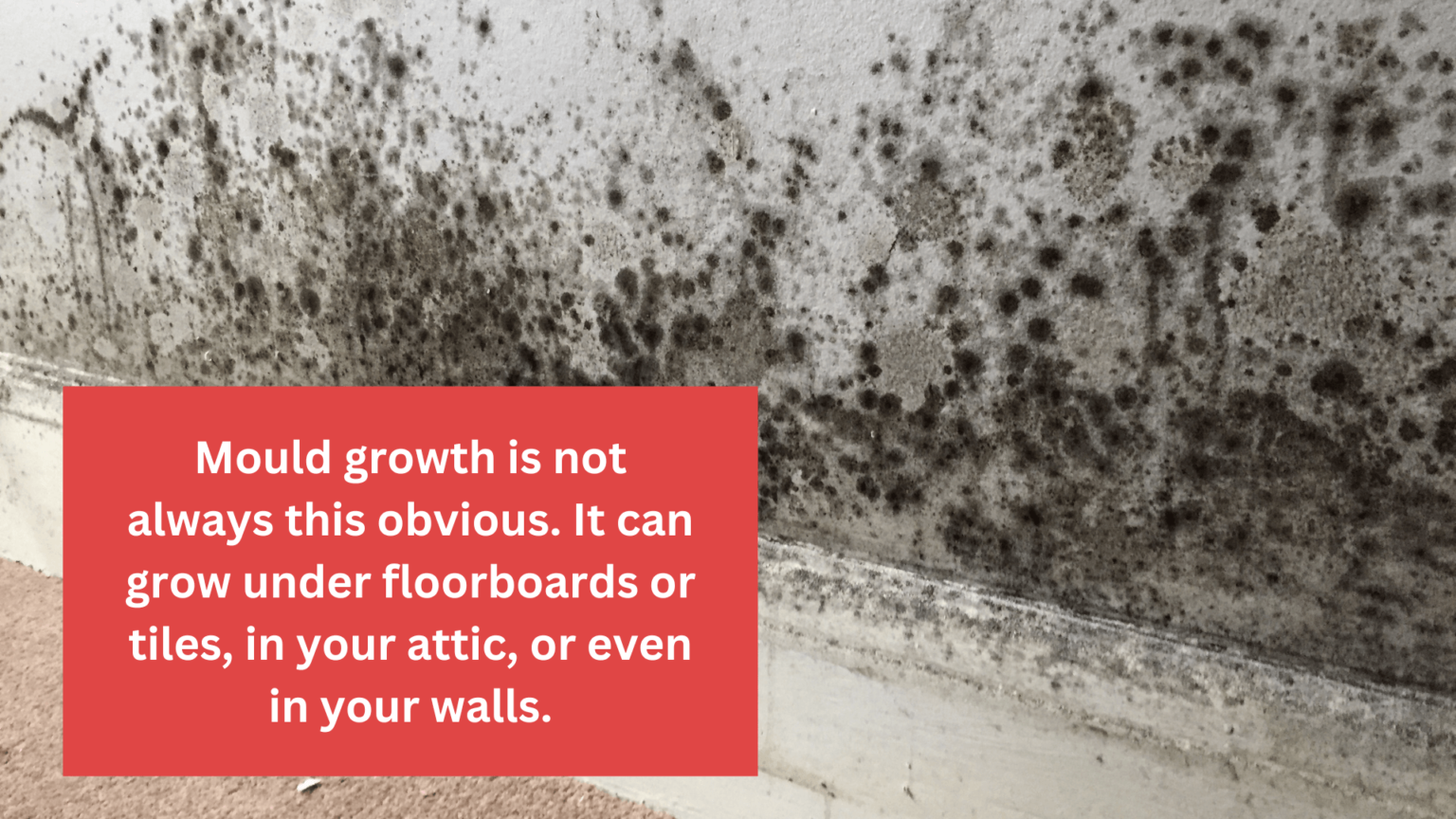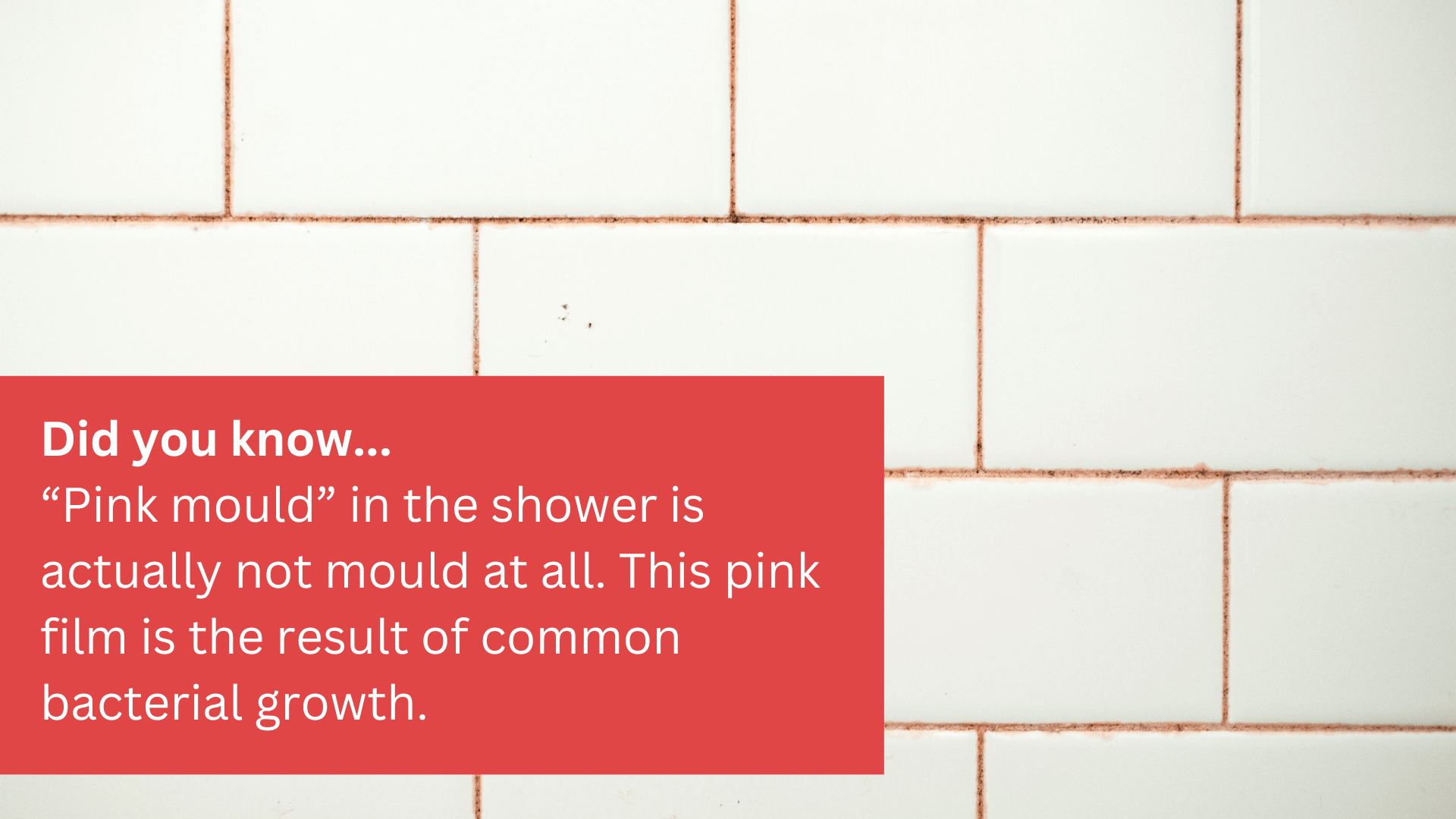Found mould? If you have, you may be wondering how to remove mould in your home quickly and safely. For most mould growth situations, it’s best to work with a trained professional so they can assess, contain and remove the mould. However, there are some circumstances where it may be safe to remove mould yourself. Learn more below, or contact the experts at Good Bye Mould today to get expert mould removal services.
DIY Mould Removal: Can I Remove Mould Myself?
Generally, it is not recommended that you remove mould yourself. Mould growth is often extremely complex. For example, you may notice a small amount of mould growth in the corner of your ceiling – however, behind your ceiling or walls could be extensive growth that has just now reached that corner!
Indoor mould growth poses many health risks and removing mould correctly requires extensive knowledge and training. Without expertise, you may end up spreading mould to other areas of your home, damaging your home while trying to remove mould from difficult-to-reach spaces or inhaling large amounts of spores. Exposure to mould can cause variety of symptoms including:
- Irritation of the nose, eyes, and throat
- Excessive coughing
- Shortness of breath and wheezing
- Increase in asthma symptom severity
- Flu-like symptoms that don’t go away
- Dizziness and headaches
Removing mould also requires the right tools and equipment. Personal protection equipment (PPE) is used by the professionals. They know how to protect themselves from the dangers of mould. However, most homeowners do not have access to all of the PPE required to safely remove more than a small amount of mould.

Professionals will also have access to the right equipment for not only removing mould, but for assessing the situation in the first place. Infrared thermal imaging can find moisture in areas that you wouldn’t expect and can’t see yourself. Without the tools and equipment that professionals use, homeowners can easily miss the source of the mould growth and even if visible mould is removed, hidden mould can continue to spread and damage your home.
DIY Mould Removal For Small Patches of Mould and Soap Scum
There are some instances where it is okay for homeowners to tackle small mould growth issues and other problems that are attributed to mould but in fact, are not actual mould growth.
Health Canada considers a small amount of mould growth to be an affected area of 1 m2. This is quite a small patch, but if you catch mould growth quickly and you are positive it hasn’t spread (for example, you knew about a leak and have monitored the area for mould growth), then you can safely remove it yourself following these directions and precautions listed on Health Canada’s website.
Health Canada also states that there are limitations even for small areas. For safe, DIY clean-up, the affected area must be a non-porous material, for example:
- Glass
- Metal
- Concrete
- Leather
- Vinyl
Some common examples of areas like this in the home include windowsills, tiles, wood and other hard surfaces. It is important to note that you must clean up mould correctly using baking soda or a small amount of unscented soap. It is not recommended that you use bleach. The area must be quickly dried after the removal is complete.
If you remove a small patch of mould and you notice new mould growth, that is very likely a sign that the mould growth is more extensive than what you can see. In that case, contact a professional mould removal company as soon as possible to prevent the mould from spreading further.
Pink “Mould” in Your Shower
Most people have probably noticed at one point or another a small amount of pink “mould” in their shower. While people commonly refer to this as “pink mould” it is not actually mould at all–it is a biofilm, often called “soap scum.” This pink biofilm is just an overgrowth of the bacteria Serratia marcescens. This bacteria thrives in moist environments and is very common in showers and tubs.

Serratia marcescens is safe to clean up yourself. Although this bacteria is unlikely to cause health problems in healthy individuals, it’s always best to take precautions. If it comes into contact with an open wound or your eyes, it has the potential to make you sick. Wear gloves, safety goggles and an N95 respirator while cleaning it up.
To remove the biofilm from your shower or tub, you can mix baking soda with dish soap and scrub it off using a bristle brush. Because it is pink (it can also be red or orange), it is usually quite easy to see, making for a relatively simple cleanup. It is recommended that you thoroughly clean your shower and remove any signs of bacteria growth once per week. This will help prevent it from building up and creating a more complicated clean-up process.
Other Common Mould Growth Areas: Coffee Makers, Washing Machines and Dishwashers
Sometimes, you may notice a small amount of mould growing in a contained space such as your washing machine, coffee maker or dishwasher. Appliances like these that use water are prone to small areas of mould growth. Generally, it is safe to clean mould from these spaces because the mould is easy to see and completely contained on a hard, easy-to-reach surface.
In general, when cleaning areas like this, you will still want to take precautions. Make sure that you wear gloves, safety goggles and an N95 respirator mask. This will reduce the likelihood that mould will come into contact with your skin or that you will breathe it in. There are a number of different ways to clean mould from areas like these. There are many guides online that provide helpful tips for cleaning mould using household products like vinegar, dish soap and baking soda.
Mould vs Mildew vs Soap Scum
Mould, mildew soap scum…what’s the difference?! As we noted above, soap scum or “pink mould” is not mould at all. It is a biofilm made from a bacteria colony. Just like mould, this biofilm loves moisture, which is why it is often found in showers, tubs and around sinks. Although it can cause health issues, brief exposure to it generally won’t affect healthy individuals.
Mildew refers to specific types of fungus and moulds. Mould is the general term for “all species of microscopic fungi that grow in the form of multicellular filaments, called hypha.” Mould typically live on any type of organic matter like clothing, paper, walls and floors where moisture is present. Mildew thrives in even higher moisture environments, so you will likely find it on shower walls and windowsills.
So, to summarize, mildew is a type of mould, and soap scum or pink mould is not mould at all. When you work with a professional mould removal company, they will be able to help you figure out the extent of your mould growth problem and know how to safely and effectively remove it, regardless of the type of mould or mildew that is growing in your home.
How To Remove Mould In Your Home: Call The Professionals
At Good Bye Mould, we understand that finding mould in your home can feel stressful and overwhelming. We do everything we can to help make the process as easy as possible right from the start. When it comes to how to remove mould in your home, here’s what you can expect:
- First, our IICRC-certified technicians will arrive at your home to assess the affected area(s).
- Our technicians are trained to find the source of the problem and determine how to stop it from happening again. They will conduct a thorough examination of your home to find the extent of the problem, determine why it happened in the first place, and find out if the mould growth has spread.
- At Good Bye Mould, we know the importance of an accurate assessment. We use the best and latest equipment and technology to address your home’s mould growth. We use technology including infrared thermal imaging, moisture meters, and air quality testing to get the most accurate results.
- After the assessment, our technicians will safely contain the mould to ensure it does not spread further. Proper containment is crucial step to ensure mould does not spread while it is disturbed during the removal process.
- After all that, our technicians will safely and efficiently remove all the mould from your home.
During the process, we want you and your family to feel totally at-ease. You are always welcome to chat with us about what to expect or ask us any questions you may have before, during and after the process.
Have Mould In Your Home? Rely On The Mould Removal Experts at Good Bye Mould!

If you have mould in your home, you can rely on the experts at Good Bye Mould to safely and effectively remove it! At Goodbye Mould, we care about the health and safety of you and your family. We’re committed to 100% customer satisfaction. We have a 5-star rating on Google and countless satisfied customers.
If you’ve noticed mould growth in your home, we can provide you with a quote and air quality assessment to help determine the extent of any mould issues in your home. Even if you suspect mould growth but haven’t seen any, we’ll be able to assess and provide you with an accurate quote so you will not be left with any surprises when it comes to mould removal costs.
If you are in need of the best basement mould removal in Kitchener, Waterloo and the surrounding areas, get in touch with the experts at Good Bye Mould today. We would be happy to talk with you about expert solutions to your mould problem.
“Rick is very professional. He is very knowledgeable and guides you in the right manner. He was on time, did his job perfectly well. You wont regret getting the job done by him.”
